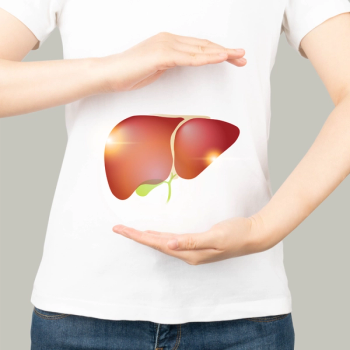
Sentinel Lymph Nodes May Be Detected With AI in Breast Cancer
The use of artificial intelligence to detect sentinel lymph nodes in patients with breast cancer may be able to save time and reduce costs as compared with immunohistochemistry.
Artificial intelligence (AI) may be a safe way to detect sentinel lymph nodes in patients with breast cancer while reducing the use of immunohistochemistry, recent study findings demonstrated.
Results from the CONFIDENT-B trial were presented at the
According to the National Cancer Institute, the sentinel lymph node is the first lymph node to which cancer is likely to spread from the primary tumor. Immunohistochemistry is a laboratory method used to diagnose cancer and to distinguish different types of cancer. This method of diagnosis uses antibodies linked to an enzyme or fluorescent dye.
The trial found a significantly lower risk of immunohistochemistry use to detect sentinel lymph node metastases when AI was used. The involvement of AI led to a reduction in the use of immunohistochemistry in positive sentinel lymph nodes by 32%.
“Implementation of AI assistance for breast cancer sentinel lymph node assessment is safe — patients are not at risk of an inferior diagnosis,” lead study author Dr. Carmen van Dooijeweert, a clinical epidemiologist from UMC Utrecht in the Netherlands, said during the presentation. “It leads to a significant reduction of (immunohistochemistry) use and subsequent costs, it leads to a significant time reduction for pathologists, and it makes their work more enjoyable.”
The investigators on the trial aimed to determine if an AI workflow could reduce immunohistochemistry costs and maintain the standards under which they were working. A total of 190 sentinel lymph node samples were included in this analysis, with 90 in the control arm and 100 in the intervention arm. Of the available sentinel lymph node samples, 59 (31.1%) were detected to have metastases.
The pathologist's performance was analyzed, with the sensitivity (how well a test can detect a disease) increasing from 0% to 27.3% for isolated tumor cells. For micrometastases (a small number of cancer cells that spread from the primary tumor to other parts of the body), there was an increase in sensitivity from 50% to 80%. Additionally, sensitivity increased from 92.3% to 100% for macrometastases (a significant number of cancer cells that spread). The negative predictive value (the likelihood a patient with a negative test does not have the disease being tested for) of pathologists saw an increase from 78.9% to 88.2%.
This trial saw a reduction of subsequent immunohistochemistry costs by $3,200 (€3,000). In a potential future scenario involving the use of the AI algorithm, there was a predicted cost decrease of €1,500 to €3,000 per 100 sentinel lymph node samples. In another future scenario, the predicted cost reduction ranged from €7,500 to €12,500 per 100 sentinel lymph nodes.
The workflow for pathologists was also analyzed. There was a significant reduction in time in the intervention arm with an analysis of 3 minutes and 45 seconds per sample versus 6 minutes and 4 seconds in the control arm.
“What’s very important is that all pathologists stated that the algorithm was very easy to use, made their work more enjoyable and that they prefer working with the algorithm in the future,” van Dooijeweert said in the presentation.
The presentation highlighted that detecting sentinel lymph nodes is an arduous task that can become costly when immunohistochemistry stains are ordered to ensure that no metastases are missed on the original assessment. This was a single-center trial that included all consecutive sentinel lymph node samples of patients with breast cancer or in situ (in its original place) breast cancer at UMC Utrecht between September 2022 and May 2023.
Five expert breast pathologists were part of this trial and tested biweekly samples. The intervention arm used the CE-IVD-approved Metastasis Detection App by Visiopharm, and the control arm used standard practice. To ensure safety, all samples included immunohistochemistry for all morphologically negative cases.
For more news on cancer updates, research and education, don’t forget to




